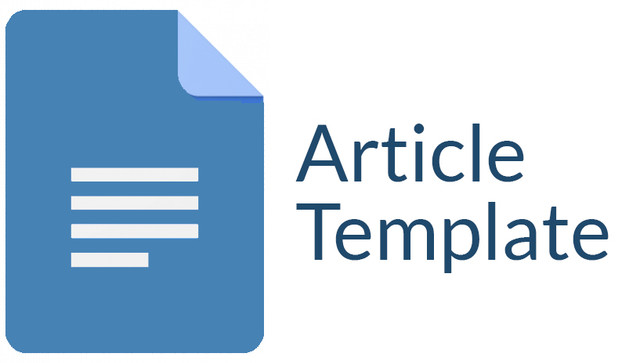Kemampuan Berpikir Kritis Siswa dalam Pembelajaran Inquiry-Discovery
DOI:
https://doi.org/10.30736/seaj.v2i2.286Abstract
Penelitian ini bertujuan untuk mengukur pengaruh model pembelajaran inquiry-discovery terhadap meningkatnya kemampuan berpikir kritis siswa pada materi fluida statis. Penelitian dilakukan kepada siswa SMA kelas XI di kota Malang. Penelitian ini menggunakan metode quasi-experiment sebagai metode untuk melaksanakan penelitian. Hasil yang diperoleh adalah adanya peningkatan dalam kelas eksperimen lebih tinggi daripada kelas kontrol. Penelitian selanjutnya diharapkan untuk mengukur peningkatan kemampuan berpikir tingkat tinggi lainnya, seperti kemampuan pemecahan masalah untuk mengurangi miskonsepsi mereka dengan menggunakan pembelajaran yang sama.Downloads
References
Aizikovitsh-udi, E., & Cheng, D. (2015). Developing Critical Thinking Skills from Dispositions to Abilities : Mathematics Education from Early Childhood to High, (March), 455–462.
Ardianto, D., & Rubini, B. (2016). Comparison of students’ scientific literacy in integrated science learning through model of guided discovery and problem based learning. Jurnal Pendidikan IPA Indonesia, 5(1), 31–37. https://doi.org/10.15294/jpii.v5i1.5786
Basman, T., Arifin, A., & Muris, M. (2016). The development of discovery-inquiry learning model to erduce the science misconceptions of junior high school students. International Journal of Environmental & Science Education, 11(12), 5676–5686.
Conference, I., English, L., & Language, A. (2016). A Model of Critical Thinking as an Important Attribute for Success in the 21st Century, 232(April), 102–108. https://doi.org/10.1016/j.sbspro.2016.10.034
Docktor, J. L., & Mestre, J. P. (2014). Synthesis of discipline-based education research in physics. Physical Review Special Topics - Physics Education Research, 10(2), 1–58. https://doi.org/10.1103/PhysRevSTPER.10.020119
Duran, M. (2016). The effect of the inquiry-based learning approach on student ’ s critical -thinking, 12(12), 2887–2908. https://doi.org/10.12973/eurasia.2016.02311a
Education, T. (2015). Examining the Critical Thinking Dispositions and the Problem Solving Skills of Computer Engineering Students, 11(2), 353–361. https://doi.org/10.12973/eurasia.2015.1342a
Gregorio, J. B. (2015). Using Video Analysis , Microcomputer-Based Laboratories ( MBL ’ s ) and Educational Simulations as Pedagogical Tools in Revolutionizing Inquiry Science Teaching and Learning, 1(1), 43–64.
Häkkinen, A. (2017). This is an electronic reprint of the original article . This reprint may differ from the original in pagination and typographic detail ., 23(1), 25–41. https://doi.org/10.1080/13540602.2016.1203772
Holmes, N. G., Wieman, C. E., & Bonn, D. A. (2015). Teaching critical thinking. Proceedings of the National Academy of Sciences, 112(36), 11199–11204. https://doi.org/10.1073/pnas.1505329112
Howard, L. W., Tang, T. L., Austin, M. J., Bullington, K., Foote, D., Hennington, A., … Clark, R. (2010). Journal of Business Ethics, (615), 1–38.
Kivunja, C. (2014). Do You Want Your Students to Be Job-Ready with 21st Century Skills? Change Pedagogies: A Pedagogical Paradigm Shift from Vygotskyian Social Constructivism to Critical Thinking, Problem Solving and Siemens’ Digital Connectivism. International Journal of Higher Education, 3(3), 81–91. https://doi.org/10.5430/ijhe.v3n3p81
Loes, C. N., Salisbury, M. H., & Pascarella, E. T. (2015). Student perceptions of effective instruction and the development of critical thinking: a replication and extension. Higher Education, 69(5), 823–838. https://doi.org/10.1007/s10734-014-9807-0
Manalo, E., & Uesaka, Y. (2018). Students ’ Spontaneous Use of Diagrams in Written Communication : Understanding Variations According to Purpose and Cognitive Cost Entailed Students ’ Spontaneous Use of Diagrams in Written Communication : Understanding Variations, (February). https://doi.org/10.1007/978-3-662-44043-8
McCormick, N. J., Clark, L. M., & Raines, J. M. (2015). Engaging Students in Critical Thinking and Problem Solving: A Brief Review of the Literature. Journal of Studies in Education, 5(4), 100. https://doi.org/10.5296/jse.v5i4.8249
Müller, K., Prenzel, M., Seidel, T., Müller, K., Prenzel, M., Seidel, T., … Kjærnsli, M. (2016). Assessing Contexts of Learning, (December 2016). https://doi.org/10.1007/978-3-319-45357-6
Rönnebeck, S., Bernholt, S., & Ropohl, M. (2016). Searching for a common ground – A literature review of empirical research on scientific inquiry activities. Studies in Science Education, 52(2), 161–197. https://doi.org/10.1080/03057267.2016.1206351
Ş, Ö. K., & Özsoy, S. (2009). Pre-service teachers ’ attitudes toward use of Vee diagrams in general physics laboratory, 1(3).
Thaiposri, P., & Wannapiroon, P. (2015). Enhancing students ’ critical thinking skills through teaching and learning by inquiry-based learning activities using social network and cloud computing. Procedia - Social and Behavioral Sciences, 174, 2137–2144. https://doi.org/10.1016/j.sbspro.2015.02.013
Tiruneh, D. T., & Cock, M. De. (2017). Measuring Critical Thinking in Physics : Development and Validation of a Critical Thinking Test in Electricity and Magnetism, 663–682. https://doi.org/10.1007/s10763-016-9723-0
Veresov, N. N. (2016). Perezhivanie as a Phenomenon and a Concept: Questions on Clarification and Methodological Meditations. Cultural-Historical Psychology, 12(3), 129–148. https://doi.org/10.17759/chp.2016120308
Wang, B. (2018). Effects of the Application of Computer Network Technology to Guided Discovery Teaching on Learning Achievement and Outcome, 14(7), 3269–3276.
Wartono, W., Hudha, M. N., & Batlolona, J. R. (2018). How are the physics critical thinking skills of the students taught by using inquiry-discovery through empirical and theorethical overview? Eurasia Journal of Mathematics, Science and Technology Education, 14(2), 691–697. https://doi.org/10.12973/ejmste/80632
Wartono, W., Rafafy Batlolona, J., & Huda, C. (2018). Influence of Discovery Learning-Based Empirical- Theoretical Study Assisted by Animation Phet on the Physics Problem-Solving in High School, (February).
Wenning, C. J., & Khan, M. A. (2011). Levels of Inquiry Model of Science Teaching : Learning sequences to lesson plans. Journal of Physics Teacher Education Online, 6(2), 17–20.
Published
How to Cite
Issue
Section
License
Authors who publish with this journal agree to the following terms:
- Authors retain copyright and grant the journal right of first publication with the work simultaneously licensed under a Creative Commons Attribution-ShareAlike 4.0 International License that allows others to share the work with an acknowledgment of the work's authorship and initial publication in this journal.
- Authors are able to enter into separate, additional contractual arrangements for the non-exclusive distribution of the journal's published version of the work (e.g., post it to an institutional repository or publish it in a book), with an acknowledgment of its initial publication in this journal.
- Authors are permitted and encouraged to post their work online (e.g., in institutional repositories or on their website) prior to and during the submission process, as it can lead to productive exchanges, as well as earlier and greater citation of published work (See The Effect of Open Access).

This work is licensed under a Creative Commons Attribution-ShareAlike 4.0 International License.










